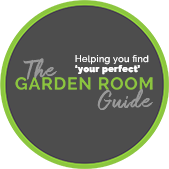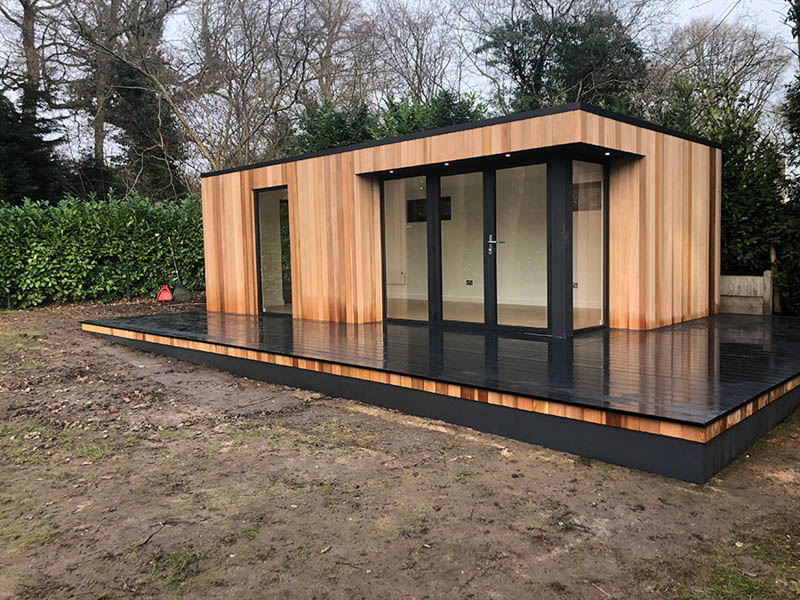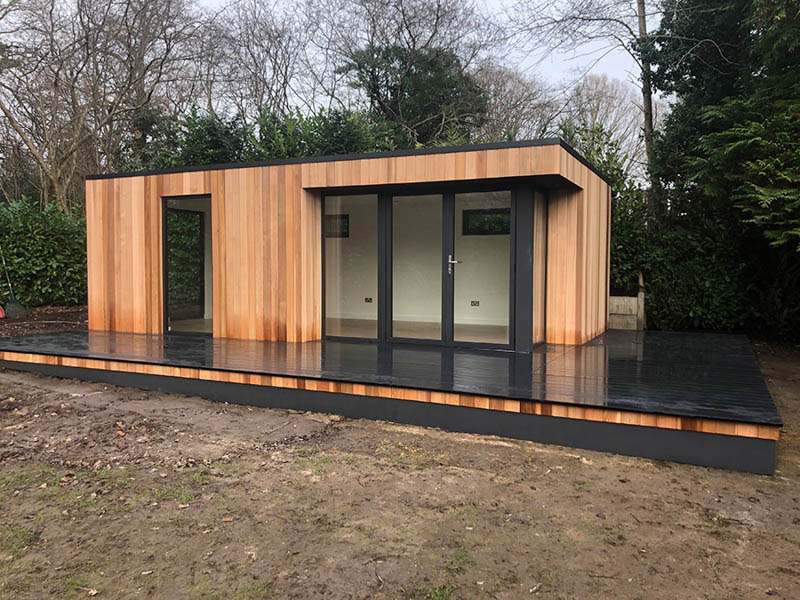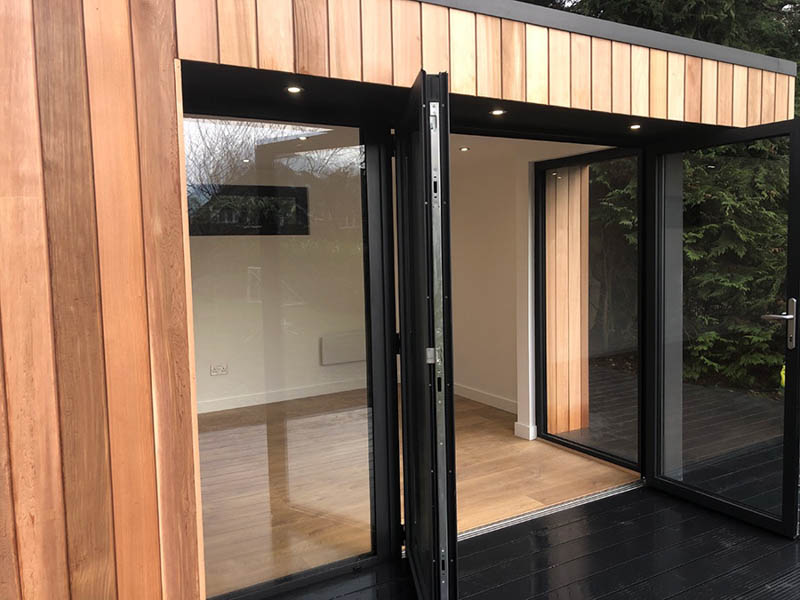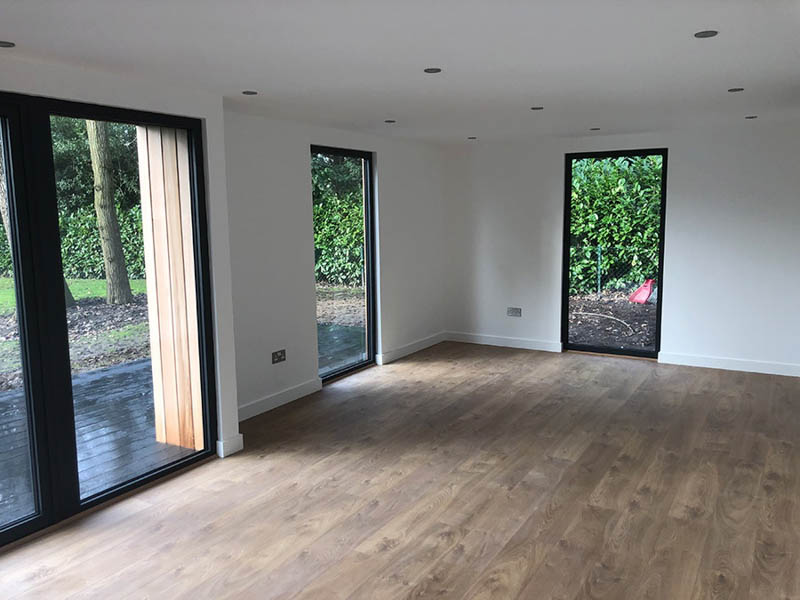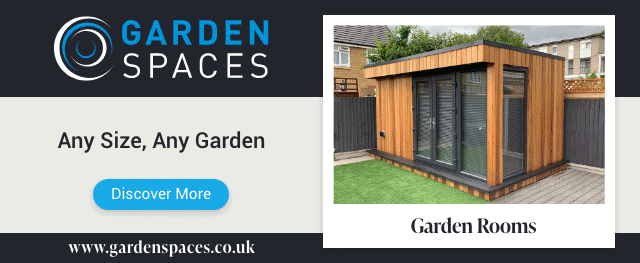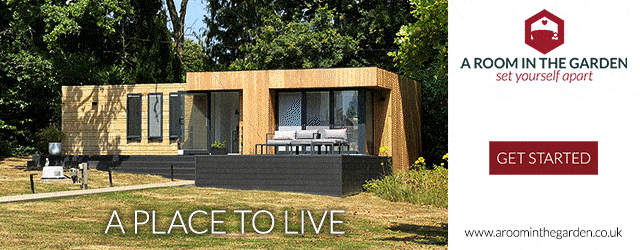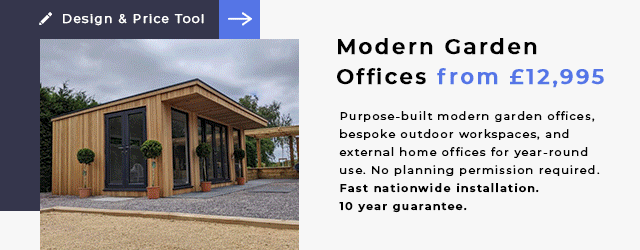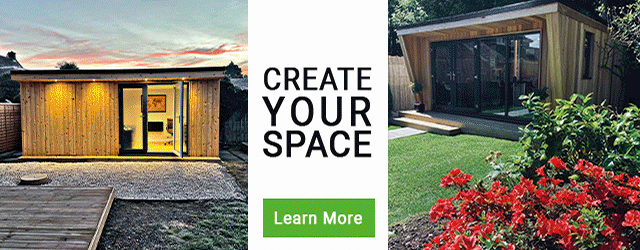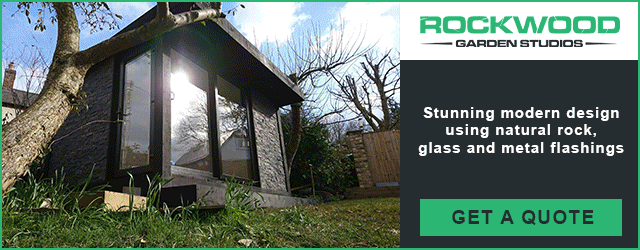Adding a decked area next to a garden room is an excellent way to enhance the inside-outside qualities of garden room use. You can not only create a seating and entertaining area outside the room but with attention to floor and door threshold heights, create an uninterrupted flow of movement between inside and outside spaces.
This 7.3 meter x 4 meter garden room by Garden Spaces showcases how the addition of a decked area can enhance the connection between room and garden.
We love how the deck wraps around two sides of the building — creating plenty of seating room both along the front of the building and at the side.
Garden Spaces offer a choice of decking materials
Garden Spaces offer several material options when it comes decks. There is a finish for every budget and taste.
Composite decking
In this case, the deck has been finished with a graphite coloured composite decking. Composite decking has become popular in garden room design as the grey finish complements the colour of the doors, windows and trims commonly chosen.
As we can see from these images, the dark grey finish works particularly well with the reddish-brown colouring of the Western Red Cedar cladding. We love the attention to detail of the Cedar trim around the skirt of the deck.
Composite decking offers a long maintenance-free lifespan, requiring little more than a soapy wash down each year to stay looking good. Also, the boards don't become slippery in the way some timber decks can.
Balau hardwood decking
An alternative to composite decking on large projects, like this, is Balau. Balau is a responsibly sourced hardwood which has been used as the decks on boats for years. It is known for its anti-slip properties and is naturally resistant to rot and fungal attack.
Balau virtually knot-free, and its honey colouring compliments Western Red Cedar cladding. An annual application of deck oil will maintain the natural colouring; otherwise, in time, it will weather to a silvery grey.
Western Red Cedar decking
Garden Spaces also offer Western Red Cedar decking. Choosing the same material as the external wall cladding on the deck can be a very effective design choice.
Cedar is a highly durable softwood that has a natural resistance to rot and fungal attack. The boards have a lovely reddish-brown colour and are virtually knot-free. An annual application of oil will stop the Cedar weathering to a silver-grey colour.
Thermowood decking
Thermowood decking is, often the most cost-effective choice. It mixes well with all wall claddings but looks particularly good paired with Thermowood cladding.
Thermowood is a Scandinavian softwood that is treated at very high temperatures, which makes the boards highly durable and resistant to rot and fungal attack.
An annual application of deck oil will maintain the rich honey colouring of Thermowood; otherwise, it will weather to a silver-grey colour.
Stainless steel fixings
Whatever decking board material you choose, the Garden Spaces team will fit it using countersunk stainless steel fittings. The boards are fixed at 400mm intervals, so there is no fear of a board lifting and the deck surface becoming uneven.
Great connection between the garden room and deck
The Garden Spaces team have created a great connection between the inside and outside spaces. The floor in the room is the same height as the deck, which enhances the feeling of space. The doors have been fitted with a low threshold so there is no step breaking the flow between inside and outside.
We love the arrangement of doors and windows on this project. The full-height glazing ties the inside and outside spaces together and frames views of the lovely garden.
The recessed corner of glazing is particularly effective. It is made up with a wide pair of outward opening doors with fixed windows either side. LED downlights have been recessed in the canopy above the doors, which will create an attractive curtain of light along the corner of the building.
